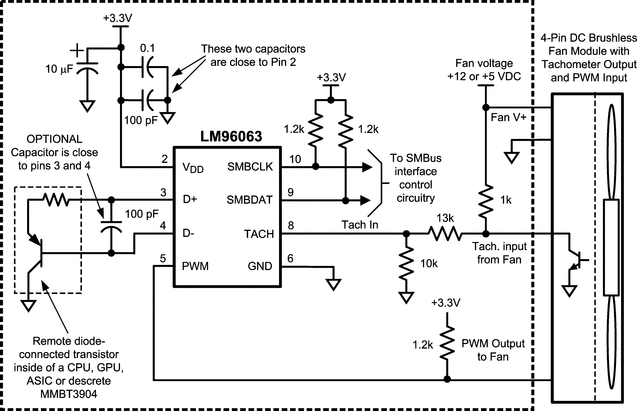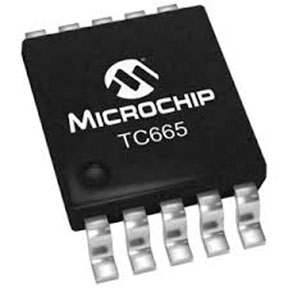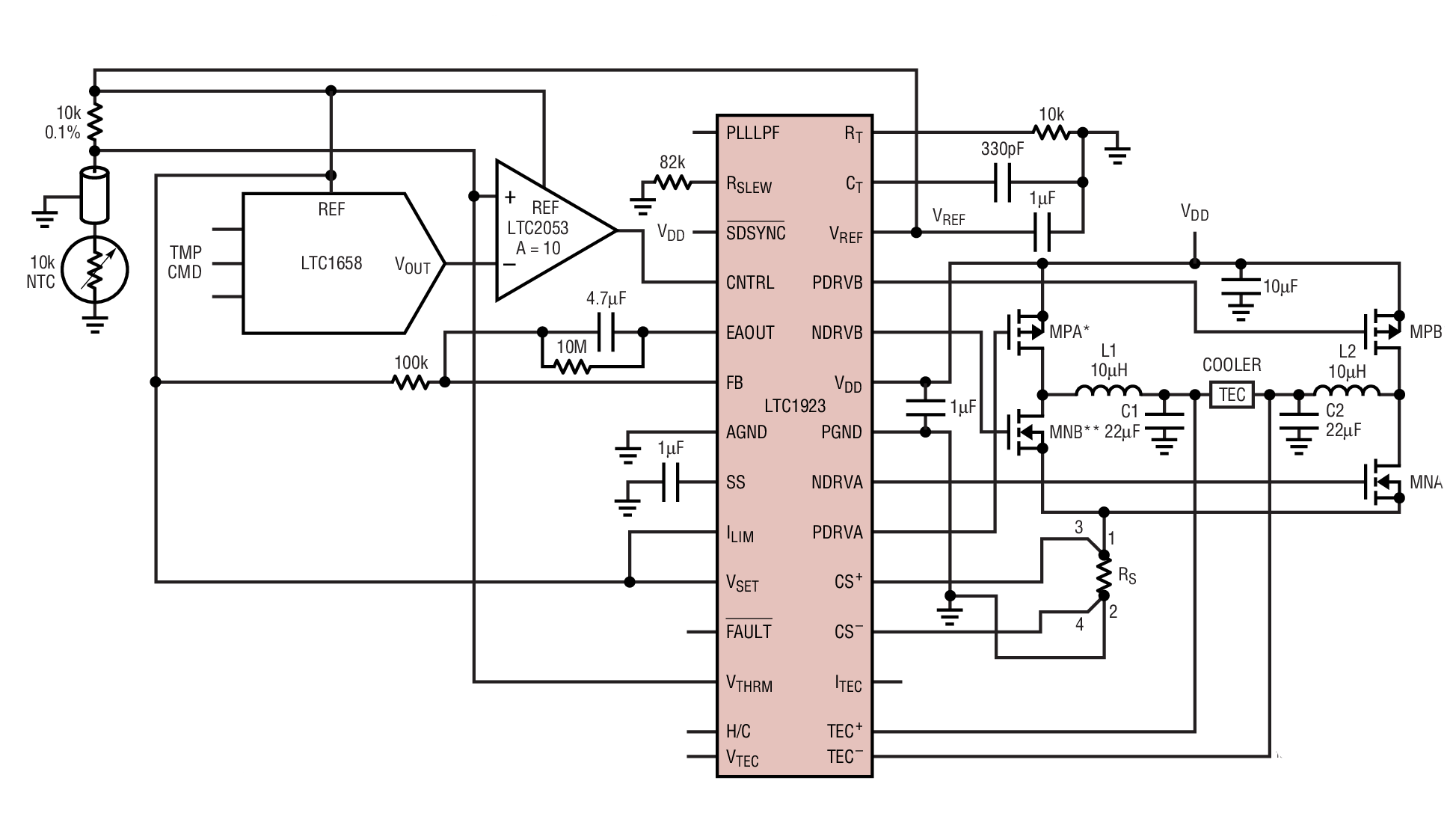Enhancing your product with speed-controlled fans can be a quick and significant upgrade — reducing noise, reducing energy use, adding system health monitoring, and providing an important over-temperature safety shutdown. Available fan controllers are low-cost and easy to design in. Let’s look at three examples — plus one IC for a very different approach.
Texas Instruments
The LM96063 fan control IC from Texas Instruments includes remote diode temperature sensing and has a high resolution at 22.5 kHz PWM fan speed control output for four-pin fans. The IC will accurately measure its own temperature and the temperature of a diode-connected transistor, such as a 2N3904, or a thermal diode commonly found on graphics processor cards and ASICs. It provides an offset register that can adjust for a variety of thermal diodes and the chip can resolve remote temperatures to 255.9°C. It can reduce acoustic fan noise via a user-settable 12-step lookup table for fan speed vs. temperature, and it gives smooth transition between set points.

The chip's tachometer input monitors fan RPM and gives an alert output for error event notification. There is an output for critical temperature system shutdown. The IC uses an SMBus 2.0-compatible interface and comes in a 10-pin WSON package. The device costs $1.15 ea/1,000.
ON Semiconductor
ON Semiconductor makes both temperature sensors and fan controllers. The ADT7490 thermal monitor and multiple PWM fan controller IC targets noise-sensitive or power-sensitive applications requiring active system cooling. The IC includes a local temperature sensor, two remote diode temperature sensor inputs (with series resistance cancellation), and can monitor CPU temperature with a Platform Environment Control Interface (PECI). PECI is an Intel-specified CPU interface.

The ADT7490 can drive up to three fans using either low- or high-frequency PWM outputs and measure and control the speed of up to four fans so they operate at the lowest possible speed for minimum acoustic noise. The automatic fan speed control loop optimizes fan speed for a given temperature using the PECI, remote, or local temperature information. The IC also provides critical thermal protection via an alarm output.
The chip setup is carried out using the serial system management bus (SMBus). The remote sensor is accurate to ±1.5°C over 0°C to 85°C and ±2.5°C over −40°C to 125°C and fan RPM measurement is accurate to ±10%. The device comes in a 24-pin SSOP package and costs $1.15 ea/2,500.
Microchip
The TC664/TC665 SMBus PWM fan speed controllers from Microchip have fault detection and implement temperature proportional speed control for brushless DC fans. Temperature sense is typically provided by an external thermistor or voltage output sensor. The PWM output is adjusted between 30% and 100%. The IC can also be programmed via SMBus for direct fan speed control without temperature measurement.

The chip monitors fan RPM via a pulse feedback and if RPM level falls below a user-programmable threshold, the TC664/TC665 will assert a fault output. The 10-pin MSOP packaged devices use a 3.0- to 5.5-V supply and consume only 150 μA during operation. Operating temperature range is −40°C to 85°C. The TC665 version will pull the FAULT output low during an over-temperature condition; the 664 will not. The TC655 costs $1.39 ea/100.
A different approach
An IC with a similar function to these fan controllers — but a very different approach — is the LTC1923. That different method is thermoelectric cooling/heating.
Linear Technology
The LTC1923 from Linear Technology is a pulse width modulator intended for thermoelectric cooling (TEC) or heating applications. The device is often used in laser-based fiber-optic transceivers, medical instruments, and for CPU temperature control. The QFN32 or SSOP24 packaged chip is a full bridge bi-directional controller with four gate drive outputs. It has adjustable PWM slew rate for low noise operation and adjustable pulse-by-pulse current limit with open/shorted thermistor indication.

The IC uses a NTC thermistor sensor, and an accurate temperature control loop is easily achieved with the addition of just a few external components. A typical temperature set-point accuracy of 0.1°C is achievable. Adding an instrumentation amplifier front end allows set-point stability of 0.01°C. The chip has a 2.5-V reference voltage output and its minimum operating voltage is 2.7 V. From $19.29 each.
Advertisement
Learn more about Linear TechnologyMicrochip TechnologyON SemiconductorTexas Instruments





